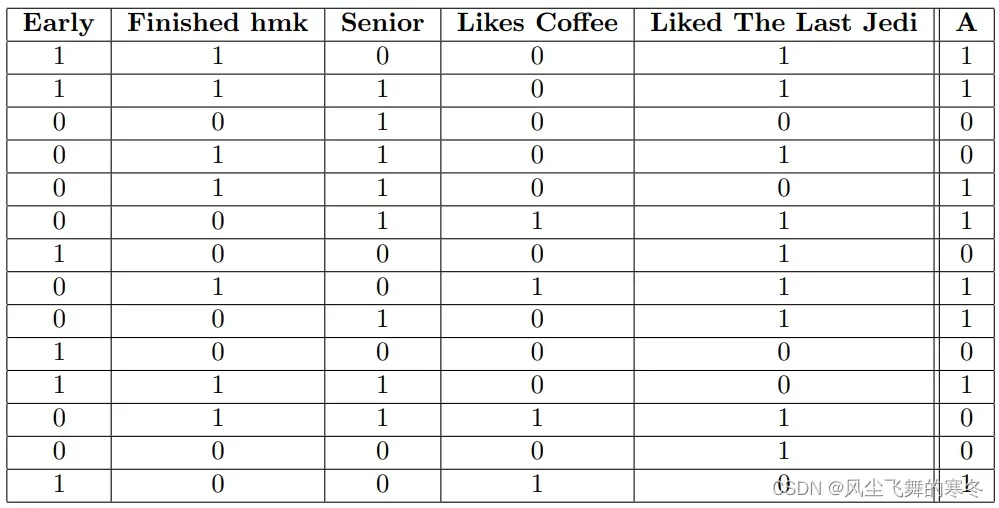题目

代码
CountEntropy.m
function [num1,num2,sum]=CountEntropy(index,n,mat,num)%index是索引,n是属性数,mat是原矩阵,num是可用数目
sum=[0,0,0,0];%分别表示1的正、反例数,0的正、反例数
len=length(num(:));
num1=linspace(0,0,14);
num2=linspace(0,0,14);
for i=1:len
if num(i)==0
continue;
end
if mat(i,index)==1
num1(i)=1;
if mat(i,6)==1
sum(1)=sum(1)+1;
else
sum(2)=sum(2)+1;
end
else
num2(i)=1;
if mat(i,6)==1
sum(3)=sum(3)+1;
else
sum(4)=sum(4)+1;
end
end
end
DepthSearch.m
function [node,array,ent,cnt,sum]=DepthSearch(mat,depth)
nodenum=2.^depth-1;
node=linspace(0,0,nodenum);
array=zeros(nodenum,depth);%各节点祖先节点
sum=zeros(nodenum,4);
[m,n]=size(mat);
ent=zeros(nodenum,4);%各节点信息熵
cnt=ones(nodenum,m);%可用例
for i=1:depth
l=2.^(i-1);
r=2.^i-1;
for j=l:r
for k=1:n-1
c=find(array(j,:)==k);%查找是否存在
if length(c)>0%若存在则跳过
continue;
end
[temp1,temp2,temp3]=CountEntropy(k,n-1,mat,cnt(j,:))
curent=Entropy(temp3)
if curent(end)>ent(j,4)
ent(j,:)=curent;
sum(j,:)=temp3;
array(j,i)=k;
if j*2<nodenum
array(j*2,:)=array(j,:);
%array(j*2,i)=k;
array(j*2+1,:)=array(j,:);
%array(j*2+1,i)=k;
cnt(2*j,:)=temp2;
cnt(2*j+1,:)=temp1;
end
end
end
end
end
end
run.m
mat=[[1,1,0,0,1,1],
[1,1,1,0,1,1],
[0,0,1,0,0,0],
[0,1,1,0,1,0],
[0, 1, 1, 0, 0, 1],
[0, 0, 1, 1, 1, 1],
[1, 0, 0, 0, 1, 0],
[0, 1, 0, 1, 1, 1],
[0, 0, 1, 0, 1, 1],
[1, 0, 0, 0, 0, 0],
[1, 1, 1, 0, 0, 1],
[0, 1, 1, 1, 1, 0],
[0, 0, 0, 0, 1, 0],
[1, 0, 0, 1, 0, 1],
];
[a,b,c,d,e]=DepthSearch(mat,3)
文章出处登录后可见!
已经登录?立即刷新
